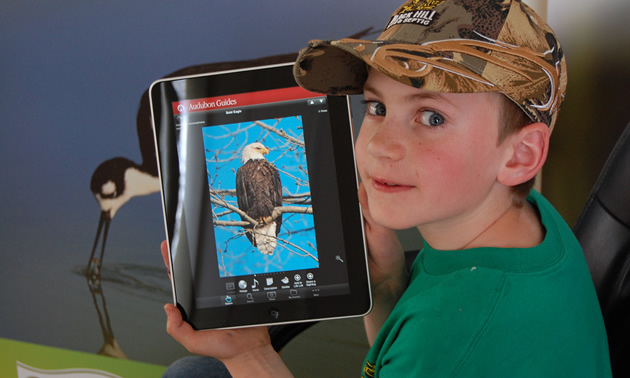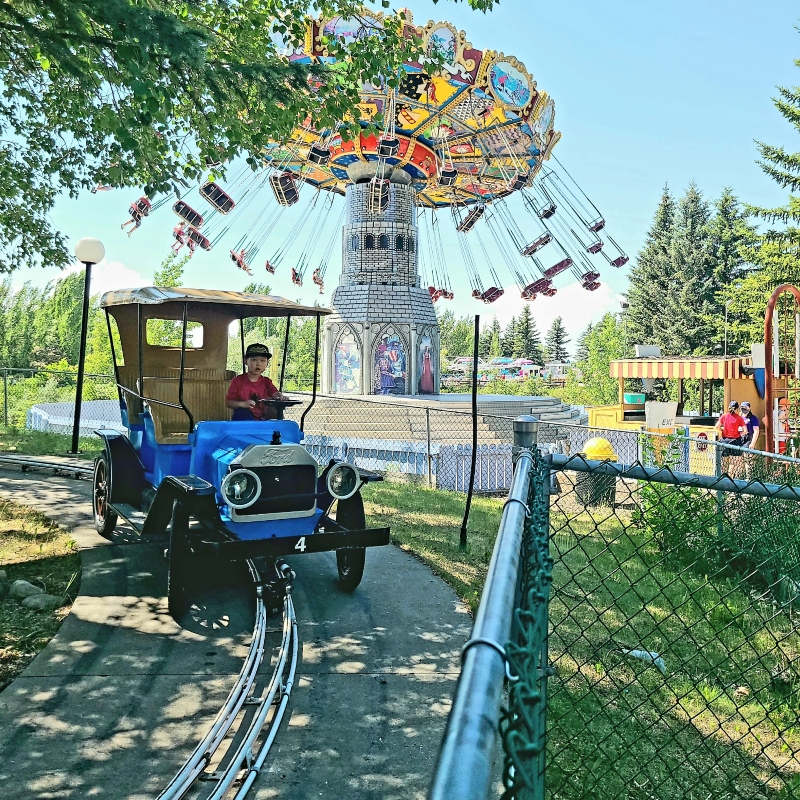A smart way to get kids learning
There's more than one kind of smart

When looking for fun, educational things for kids to do while camping in Manitoba or across Canada, who better to ask than a teacher who happens to also be one of Canada’s smartest people?
Marshall Carroll of Winnipeg is a high school chemistry teacher and part-time university professor who recently appeared on CBC’s television special Canada’s Smartest Person, in which he was one of four candidates vying for the ultimate title. The show offered viewers a chance to play along online or with their smartphone.
“The show did a great job of showcasing that intelligence doesn’t just come in one form," said Carroll. “In my role as a teacher, I use the theory of multiple intelligence all the time to help students to learn . . . especially if they’re having trouble with just the old-fashioned or old-school way of learning, because there are other ways to learn. Tapping into those ways will make learning exciting for kids.”
It’s a theory that Carroll said can also help parents or grandparents get kids learning about the natural environment when camping.
In this six-part series, Carroll tells us about a variety of games and activities that can be shared with kids as you help them to explore nature and their surroundings. The series will look at six of the nine areas of intelligence. First up: logical.
Logical intelligence
This is a form of intelligence that works with learning styles that are naturally drawn to logic. While you’d think that those with an affinity for logical intelligence would naturally excel at activities like chess or computer programming, this style focuses more on reasoning, abstract patterns and a natural curiosity for investigating.
Tap into your child’s logical-mathematical intelligence by using some of the tools they’re already most familiar with as a way of kick-starting their engagement, said Carroll. Whether it be a smartphone app you download or a laptop that you bring along for the ride, it just may be the “spoonful of sugar” that helps the learning go down.
“There’s a number of apps out now that you can download to help you do everything from identifying stars up in the night sky to apps put out by the National Audubon Society that can help you identify plants and animals,” said Carroll. “So if that’s the best way to start motivating your child, especially maybe your teen, definitely pull it out and see what you can do with it.”
However, Carroll believes that once a tool has helped get you off to a good start, you should encourage kids to put it away and get them fully involved with what they’re experiencing.
Look for patterns
Luckily for kids whose natural affinity for learning leans towards logic, nature provides plenty of patterns to follow, from the stars in the sky to rocks on the ground. Engaging a child’s ability to analyze problems logically and investigate issues scientifically will help them learn about their environment.
“Work with your child even before you leave for your trip,” said Carroll, “by doing a little research on the certain area you’ll be visiting—which can help you know what best to look for. With a little preparation, you can identify plants, birds, animals . . . all sorts of things to look for and, depending on their age, you can create a form of bingo card for kids to carry as they search for the area’s star attractions, possibly with a prize at the end for those who fill their card first.”
Have kids classify rocks by shape, size, colour, whether or not they’re sharp, how fast they can roll down a hill and whether or not they’d make good skipping rocks. Even something as simple as seeing how rocks respond to being left out in the sun can expose kids to big ideas.
“Different rocks will absorb heat and reflect heat in different rates, so you’re talking about the heat capacity,” said Carroll. “That’s a pretty complex idea, but kids can see and feel that for themselves. Take two rocks and leave them in the sun and see if one is hotter than the other. They don’t have to go into fancy detail about the molecular structure of the rock, but then they can at least see for themselves that not all of these rocks are the same.”
Keep it simple
“Sometimes it’s good not to give kids the complicated answers to what they’re doing, or to even point out that they’re learning for that matter,” said Carroll. “Just let them observe it. Come high school, there’ll be some mumbo-jumbo, highfalutin reason for why it works, but for now just let them enjoy to just look, touch, smell and even taste things.”
Starting points
Here are a few additional suggestions to get you started:
1. Metal, plastic, natural, synthetic—where do things come from? Explore the natural elements that make up many of the common items we use today.
2. Seashells, like rocks, can be collected and classified by colour, shape, size and erosion.
3. Try this interesting idea for figuring out the temperature by using crickets as your thermometer. Count the number of chirps made by a cricket in a period of 14 seconds and add 40 to it to give you the outside air temperature in Farenheit. Does it really work?
4. Rocks from outer space? Lay out a light-coloured sheet on the ground overnight. In the morning you’ll notice dust and dirt. Run a magnet over the particles and any that stick to the magnet are particles of dust containing iron from meteors that have burned up as they hit the atmosphere. This can open up a discussion on space and the impact meteors have had on our landscape.
5. Field guides have gone mobile. Look for a variety of smartphone apps put out by the Audubon Society, including Audubon Birds, Audubon Insects and Audubon Wildflowers, as well as other apps including GoSkywatch and iBird. Make even the search for the apps a research project.









